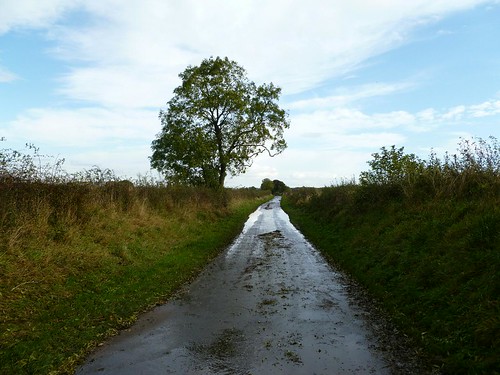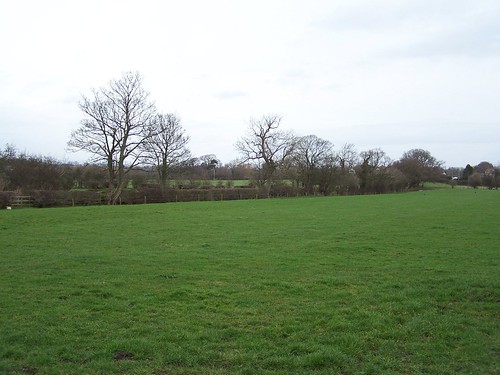The earliest itineraries of Hadrian’s Wall are the enamelled pans (the Rudge Cup, the Amiens patera, and the Staffordshire Moorlands/Ilam pan) listing the forts at the western end, soon followed by the list of officials ‘per lineam Valli‘ in the Notitia Dignitatum. However, as William Shannon shows in his book Murus Ille Famosus, the earliest proper map is probably an 11th-century Anglo-Saxon one, showing the British Isles with a crude line and a corrupt caption that may once have read ‘murus pictis‘.

Horsley Wall map extract
Generalised maps of varying quality proliferated in the 16th century but a significant development came with the publication of John Horsley’s Britannia Romana in 1732, which included a map of the Wall made for him by George Mark. This was the first serious attempt at a survey of the Wall. Soon after, the decision to build the Military Road from Newcastle to Carlisle led to a survey of the proposed line by Campbell and Debbeig in 1749. The two known surviving copies include a detailed record of the remains of the Wall, including what may be the first attempt at an elevation drawing of the curtain wall (from a section west of Harlow Hill which, ironically, would soon be destroyed by the construction of the road itself). Both Horsley’s text and the Military Road survey appear to have ‘informed’ the derivative publication by John Warburton of his Vallum Romanum in 1753.

MacLauchlan’s survey of Birdoswald
In the 19th century, the Duke of Northumberland commissioned Henry MacLauchlan (a former member of the Ordnance Survey who was an advocate of shading over contours to depict topography) to prepare a detailed survey of the Roman Wall, which included several site plans (like that of Birdoswald, seen here). MacLauchlan wrote his Memoir (published in 1865) to accompany the overall plan of the Wall and it was sufficiently highly thought of to be used in several editions of Collingwood Bruce’s Handbook to illustrate the course of the monument and can still be purchased from various outlets as an attractive historic print. Its publication more or less coincided with that of the Ordnance Survey’s First Edition series of one-inch and six-inch sheets.

OS Hadrian’s Wall map: search Ebay to find used copies
Inexorably, the Survey’s involvement with archaeology led to the production in 1964 of its two-inch Hadrian’s Wall historical map (a copy of which is still on the wall of Housesteads museum). Distinguishing between visible and presumed (or known and not visible) elements superimposed on a clear map base, it also incorporated a simple but effective fold system which made (and still makes) it easy to use in the field. It was updated in 1972 but, in 1989, the Survey produced a completely new map of the Wall that was truly abysmal in a rich and bemusing variety of ways, not least the use of their 1:50,000 map base (photographically enlarged to 1:25,000 for the Central Sector) and a confusing series of conventions. Murophiliacs clung on to their precious copies of the older map. Screeds of irrelevant text and diagrams only served to obfuscate its purpose as a map, rather than an essay-cum-gazetteer.
 The use of aerial photography for mapping became widespread in the latter part of the 20th century and this resource was exploited by English Heritage’s National Mapping Programme to revise the coverage of the Wall area. This information was ultimately fed into English Heritage’s brand-spanking-new 1:25,000 Archaeological Map of Hadrian’s Wall, first published in 2010. Not without its problems (its map base is greyed out in favour of graduated tones to indicate height – thereby, presumably unwittingly, supporting MacLauchlan’s view – and the awkward folds of the double-sided sheet render it much more cumbersome in the field than the old OS map), it has nevertheless provided up-to-date information and extended coverage down the Cumbrian Coast.
The use of aerial photography for mapping became widespread in the latter part of the 20th century and this resource was exploited by English Heritage’s National Mapping Programme to revise the coverage of the Wall area. This information was ultimately fed into English Heritage’s brand-spanking-new 1:25,000 Archaeological Map of Hadrian’s Wall, first published in 2010. Not without its problems (its map base is greyed out in favour of graduated tones to indicate height – thereby, presumably unwittingly, supporting MacLauchlan’s view – and the awkward folds of the double-sided sheet render it much more cumbersome in the field than the old OS map), it has nevertheless provided up-to-date information and extended coverage down the Cumbrian Coast.
At the same time, the availability of rectified satellite and vertical aerial photography through virtual globes such as Google Earth meant that neogeographical techniques could now be applied to Hadrian’s Wall, and that was the origin of Per Lineam Valli which first went live online in 2007 and is about to see a major upgrade. The combination of separate layers for each of the major components with the ability to hyperlink each site to online resources such as the National Monument Record’s Pastscape database and the UK government’s MAGIC map base, together with plans and photographs of the monument. The rapid development of GPS-enabled smartphones has made it possible to use the Per Lineam Valli file in the field (as a layer in Google Maps Mobile) to tap into these resources.
What is next? The use of lidar is already making aerial survey topographically more accurate and airborne ground penetrating radar, currently being developed for landmine detection, may soon be added to the armoury of the archaeologist. On the ground, you can expect the nascent technology of augmented reality to enable you to see 3D reconstructions of the Wall in situ and in real time using a mobile phone or tablet, allowing a variety of interpretations of, say, a turret to be presented. ‘Paper’ maps (the English Heritage map is already made of waterproof polyethylene, not dead trees) may be supplemented (if not replaced) by flexible e-ink displays that will draw detailed mapping and data access ever closer.


























You must be logged in to post a comment.